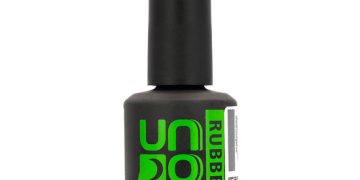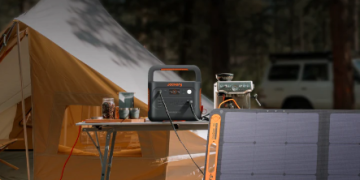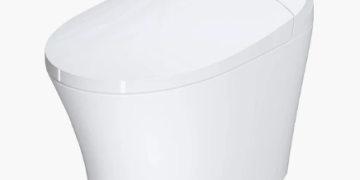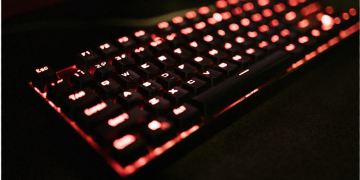Workers face multiple dangers due to limited environments’ complicated and dangerous nature. Many enterprises operating in hazardous places utilize explosion-resistant lighting to avoid igniting combustible gasses and dust particles. Explosion-safe lights have benefited from LED technology by becoming more dependable, durable and affordable.
Design and application robustness
Lights that are “explosion proof” are equipped with a spark isolation system to prevent the device from exploding. Because of this, there is less possibility of the explosive reaction spreading or igniting volatile chemicals in the immediate region. However, it’s important to remember that the items do not have an airtight seal around the lights. The light’s design requires the gas to follow a long, convoluted course via many paths and channels; thus, it cools the gas to appropriate temperatures.
Confined places are excellent for harmful gasses and vapors to gather. Compared to other active portions of the facility, such areas are often inadequately ventilated, secluded, and challenging to maintain. You must use an explosion-proof work light in restricted locations to prevent or considerably reduce fire risk. Chemical storage tanks, silos, and tanker train wagons are all examples of restricted spaces.
Fluorescent and incandescent fixtures are often used in traditional explosion-proof lighting. Comparatively speaking, these lights aren’t as effective in dangerous working situations as LEDs are. Light bulbs that use incandescent bulbs have a life expectancy of 1,200+ hours, a 10-17 lumens-per-watt ratio, and can’t operate in high temperatures or humidity. More than 10,000 hours of light may be provided by fluorescent units, which have a 40-70 lumens per watt ratio. Because of the glass pieces and filaments in the goods, both kinds of lights are fragile and should only be handled with care.
On the other hand, LEDs have a better lumens-per-watt ratio of 40-100 and an average lifetime of more than 50,000 hours. However, their tiny size makes LEDs very resilient to vibration and brutal handling. In addition, the lighting option uses 20% less energy than conventional units and is environmentally beneficial.
Classification requirements
Explosion-proof lights may only be installed in a facility if the company is aware of the classification criteria. Depending on the hazardous site and the gasses/dust present in the suitable environment, these devices have different ratings. The following criteria classify things: Groups, Divisions, and Classifications.
- Class I, Div. 1
As the name suggests, Class I, Division 1 covers situations where flammable gasses and liquids are constantly present in the environment.
- Class I, Div. 2
Perfect for areas where there is an abnormally high quantity of gas, vapor, or liquid in the environment that may be ignited.
- Class II, Div. 1
When flammable dust concentrations are present in the environment under typical operating circumstances, Class II, Div. 1 is applicable.
- Class II, Div. 2
Circumstances where flammable dust concentrations are high enough to cause ignition under abnormal operation conditions, are classified as Class II, Div. 2.
- Class III, Div. 1
A Class III, Div. 1 environment is one where readily ignitable fibers or elements that produce flammable flyings are present.
- Class III, Division 2
Under abnormal operating circumstances, fibers or materials that produce flammable flyings are found in high environmental concentrations and classified as Class III, Division 2.
Lighting must satisfy the appropriate rating or a higher rated classification to assure compliance, according to the organization. Division 2 locations with the same class, group, and temperature class as a Division 1 site may use equipment designated for a Division 1 location. In addition, the operating temperature of the devices should not exceed the minimum combustion temperature of the hazardous gasses present in the facility.
Explosion-Proof Lighting options
Manufacturers of explosion-proof LED lights have developed various solutions to meet the needs of different hazardous environments. In addition to lighting classes, choosing explosion-proof lights for the specific working environment should also be considered.
In tank inspection and close work, the benefits of explosion-resistant LED string lights, for example, are often utilized. The hooks on these pieces of equipment may be attached to bars and scaffolding. For storage and ship tanks, explosion-proof LED nozzle-mounted lights may be found with a 21″ manway aperture. On-the-go lighting needs or limited locations with barriers preventing regular equipment use may be met with explosion-resistant portable flashlights.
Batteries that may be rechargeable are standard in these devices, as are water-resistant and non-slip grips. Individuals may utilize explosion-proof LED tank lights for large-scale activities. A tripod or trolley supports the units to make transportation and setup easier. Over 100-300 watts of power and 20,000+ lumens are typical for these lighting solutions. Most explosion-proof lights also have lengthy, explosion-proof wires and plugs included in their design.
LED lights are ideal for hazardous gas and dust environments since they are explosion resistant. Workers, inspectors, and operators face various challenges at these enterprises because of their remote and unexpected position. Using the correct explosion-proof lighting in a workplace is essential to reduce the danger of fire hazards, explosions and accidents.
















